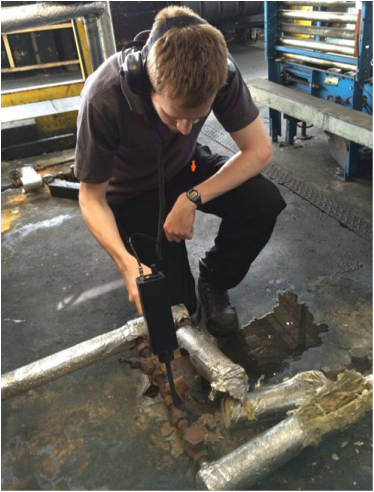See how your steam system is truly performing
|
What is a steam trap survey? A steam trap survey is an audit of the steam traps on your site, undertaken to determine the operational state of all traps in order to identify where steam savings can be made. Why should I have a steam trap survey conducted by Thermal Energy? Thermal Energy's engineers have in-depth knowledge and a large breadth of experience of steam systems from dealing with a great variety of different industries. Our engineers will be able to understand your system ensuring that each survey produces a useful and informative output document showing the breakdown of the performance of the traps at the time of the survey. A Thermal Energy Steam Trap Survey will give you a clear picture of the condition of your steam system through a comprehensive audit of the system component which is most likely to have a detrimental effect on your system when failed. During the survey the engineer will take as much information as they can about the system in order to be able to accurately size and supply any GEM steam traps that are ordered following the creation of the quote. What happens after the survey? Thermal Energy will provide an in-depth quote document. At the core of the quote will be the written-up survey detailing all steam trap locations (including some which may be recommended by the engineer to optimize the delivery of clean, dry steam around your system) with specific information for each trap location. These traps will be referenced by the location tag attached at each trap location during the survey. Along with the survey, a site-specific payback calculation will be included with full explanation of the method used to calculate the payback. A breakdown of the percentage of failed traps identified on your site will be included. |
|
What does a steam traps survey involve?
The Thermal Energy representative will communicate with their contact on site to arrange a suitable time and date to carry out the survey. If required, they will complete inductions and submit paperwork which may be required to meet any site health and safety regulations. Once on site. our engineer will start the survey in the Boiler House (if surveying the full site). The Boiler House is at the heart of the steam system and so the surveying will follow the steam lines from the boiler/s around the distribution system to the processes. The surveying of a trap location comprises the following steps:
|
What equipment is used?
The survey is a non-invasive audit of the steam traps using simple, effective testing methods to determine the operating condition of the installed traps. Below are items of equipment generally used during the survey:
|
|
Check out some success stories
|
See sector-specific applications
|
Learn more about GEM Steam Traps
|


